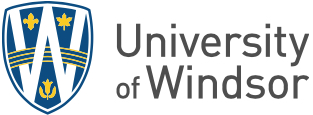Mentoring is a common aspect of teacher education. During practicum, pre-service teacher candidates may be mentored by in-service associate teachers, and faculty advisors (Roland, 2010). Additionally, many teacher induction programs include a mentoring component to support the success and learning of newly qualified teachers (García et al., 2022). The literature on teacher leadership and training reveals that many benefits to teacher or teacher candidate mentees have been identified in each of these scenarios (Jones et al., 2014; Banja et al., 2021). Additionally, it has been proposed that experiences in the role of a mentor serve as beneficial learning opportunities for pre-service and in-service educators, as mentoring involves and develops many skills that support success in the teaching profession (Smith et al., 2022).
The literature reveals several benefits of peer mentoring amongst students in higher education. Haber-Curran, Everman, and Martinez (2017) determined that working in the role of a peer mentor supports higher education students in the realms of skill development, self-development, and career awareness. Larose (2013) found that multiple mentoring experiences in both teaching practicums and peer-mentoring programs promote improved self-efficacy in student mentors.
Peer mentoring in higher education has also been valued for its proven benefits for mentees. These include networking, information-sharing, and (Naseem, 2012). Peer mentoring is also linked to decreased isolation for mentees (Lowery et al., 2018; Ong et al., 2018) as well as increased integration into university campus communities and settings (Yomtov et al., 2017). Higher education institutions have frequently implemented peer mentoring programs to support the development and retention of undergraduate students (Crisp, 2017). In studies of peer-mentoring programs for educational outcomes, student mentees demonstrated academic improvement compared to students who did not receive peer mentoring support (Asgari & Carter, 2018; Leidenfrost et al., 2014).
Mutual benefits for teacher-learners as mentees and mentors provide convincing support for the development of peer-mentoring opportunities within teacher-learning communities. Integration into professional learning communities has been identified as an important aspect of mentoring pre-service educators (Karo & Petsangsri, 2021). Such communities can be formed amongst teacher candidates in university teacher education programs (Jenkinson & Benson, 2017).
The clear potential for positive personal and professional outcomes has led researchers to recommend increased opportunities for peer mentoring amongst teacher candidates in higher education contexts (Heirdsfield et al., 2008). However, more research is needed to support teacher educators in the successful development and implementation of these programs.
The literature on mentoring in teacher education is brimming with insights addressing the characteristics and needs of successful teacher-leaders (Yılmaz & Bıkmaz, 2021), models for leadership in teaching communities (Nguyen & Mai, 2017; Gardiner. 2018), benefits and challenges of teacher mentoring (Banja et al., 2021), and spheres/roles associated with teacher leadership (Jones et al., 2014; García et al., 2022). Despite clear connections between mentorship and teacher growth, most of the peer-reviewed literature focuses on mentoring of in-service educators in teacher induction programs (Wallin et al., 2017). Literature on the mentorship of pre-service teachers includes frameworks and descriptions of programs to support associate teacher mentors (McGee, 2019; Ambrosetti et al., 2014), observations regarding the influence and roles of coaching teachers and faculty practicum advisors (Roland, 2010; Castañeda-Peña et al., 2016), and descriptions of a few experimental peer mentoring programs (Gomersall, 2019; Heirdsfield et al., 2008; Jenkinson & Benson, 2017)
Given the potential for mutual mentor and mentee growth, more institutions and teacher educators may desire to implement peer mentoring opportunities for teacher candidates. This exploratory study aims to identify best practices and valuable insights revealed by an examination of existing peer-mentoring opportunities for teacher candidates. This research will inform the successful implementation of teacher mentoring opportunities through knowledge of benefits, potential challenges, tried program models, and insights into the professional learning community.
This will be a qualitative investigation into the insights of professionals and faculty members involved in the development and facilitation of peer-mentoring opportunities for pre-service educators at the post-secondary level. The research methodology includes virtually conducted interviews.
This study has three purposes: (a) to provide insight into the nature, diversity, and number of peer-mentoring opportunities that are being offered to teacher candidates as a part of or accessory to post-secondary level teacher education programs (b) to explore common challenges and benefits of peer-mentoring opportunities offered to pre-service teacher candidates across different institutions, and (c) to illustrate and inform best practices for the implementation of peer mentoring programs for teacher candidates by higher education institutions, teacher educators, and program coordinators.
Our research in this study is guided by the following questions:
- What models for peer mentoring have previously been adapted for teacher candidates in programs across higher education institutions?
- What positive outcomes and challenges are present in these types of programs?
- What factors do experienced program coordinators identify as relevant to the success and challenges of existing peer mentoring programs for pre-service educators?
This study is now completed.
